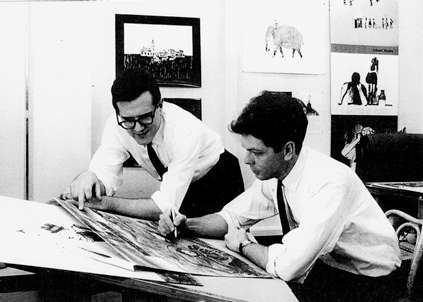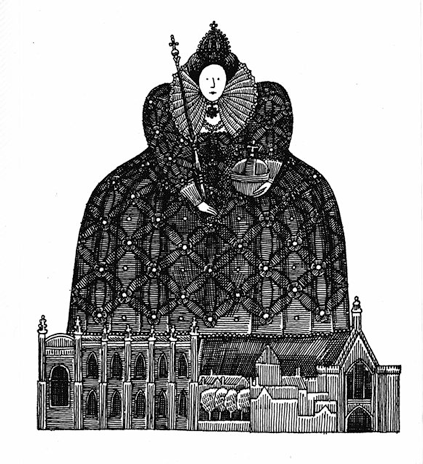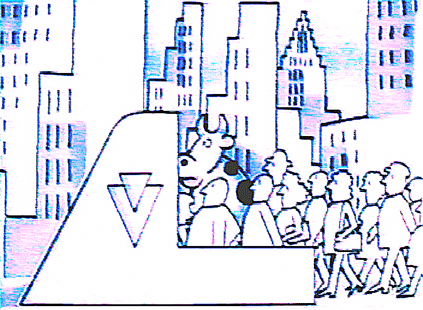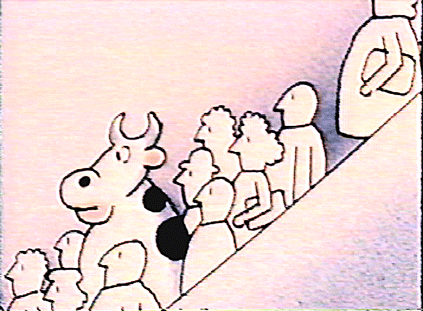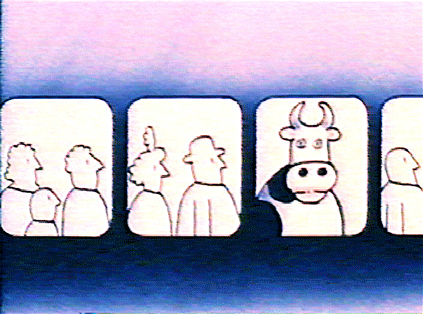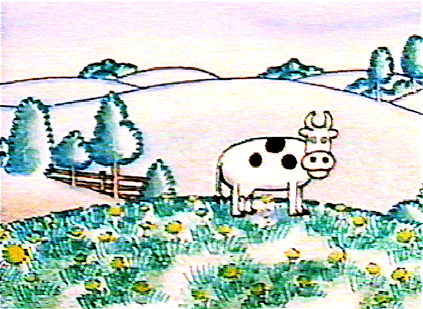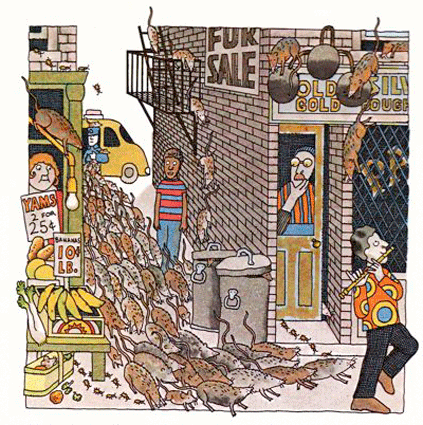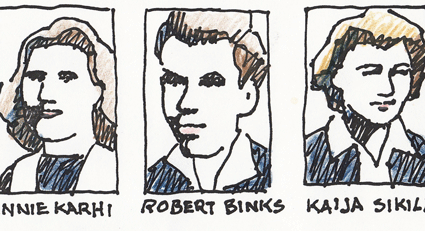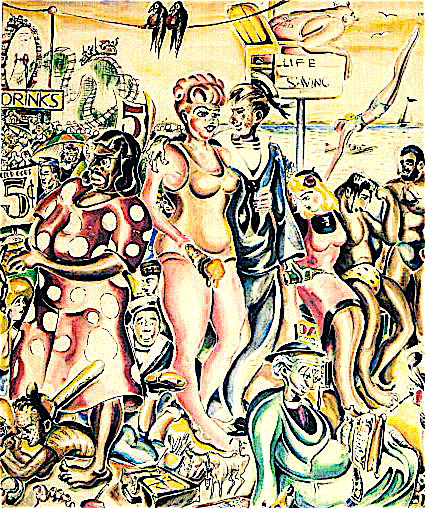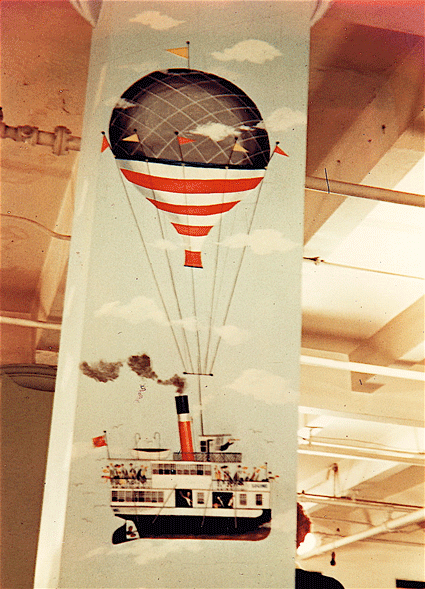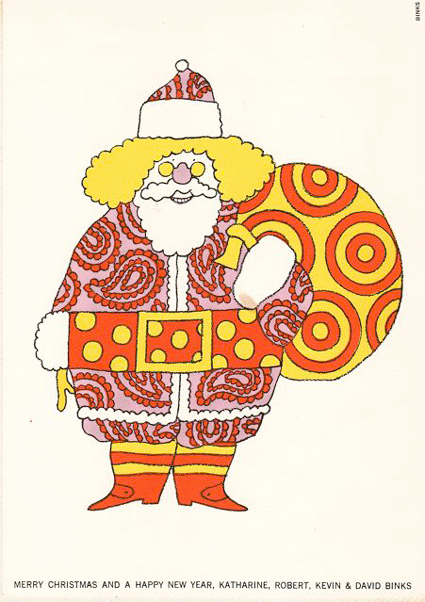Robert Binks has worked as an illustrator, cartoonist and artist for more than sixty years, during which time he has created a stream of inventive and delightful works. We began our sampling of his career last week, and scans of his illustrations for the Ogden Nash collection The Old Dog Barks Backwards can be found here.
This week we open with some of Mr. Binks’s work for the Canadian Broadcasting Corp., where he was on staff from 1957 to 1991. (These works are all © CBC/Bob Binks.) Here we see Mr. Binks early in his career, posing at his drawing board for a publicity shot as a colleague leans an elbow next to him:
From 1966, two illustrations by Mr. Binks for a retelling of the parliamentary system’s history. The book accompanied a CBC radio series of the same name:
We see a young Winston Churchill in mid-oration. The way the MPs fall into well-defined, heavily drawn columns provides an example of the high, packed compositions Mr. Binks sometimes prefers. But the columns, most of them, are set at a slant, which brings the heaviness a bit of spring and bounce. All in all, the drawing manages to bring life to an arrangement of 25 men without giving each figure an individual posture.
The line work is very detailed. Mr. Binks does the same for Elizabeth I, in this case working up the patterns for her dress and, especially, her lace collar:
Now the sequence from which we took this post’s lead-off illustration. The four drawings are cells for an animated sequence the CBC inserted into Sesame Street so that there would be some material in French:
The look on the cow’s face when it’s in the subway … Come to think of it, I like the lady with the feathered hat too. The sequence shows Mr. Binks’s ability, when necessary, to get a certain amount of endearing personality into the bare minimum of lines for a character.
We’ll close with three of the artist’s freelance assignments. First off, there’s the card he did in 1970 as a work sample for his New York agent to show around:
I’d call it a charming exercise in Peter Max/Yellow Submarine popism. The figures are reduced all the way to design touches, slender pen strokes that have no faces and end in bellbottoms. The approach is typical for Peter Max, unusual for Mr. Binks. As we saw above, he usually gets a face in there, stylized but with at least a touch of personality.
Now a page from “The Pied Piper of Harlem,” a story that appeared in a mid-1970s school book. The brick work and the crowd of rats show Mr. Binks’s vigorously detailed line work and narrow, stacked compositions:
We close with an illustration that ran in the Toronto Daily Star in 1979. The theme is familiar to anyone who knows the Canadian winter:
I think the nine cartoons in a row illustrate Mr. Binks’s knack for deceptively simple illustrations that grab the eye. The way they mix good humor, quick communication, and visual resourcefulness is very satisfying.
Next week we’ll focus on Mr. Binks’s private artwork. Drop by!


